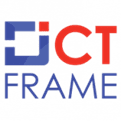17th May 2025, Kathmandu
In a landmark event aimed at shaping the future of Nepal’s digital transformation, Joint Secretary Adesh Khadka from the Ministry of Communication and Information Technology (MoCIT) delivered the keynote address at the Multistakeholder Consultation on Digital Nepal Framework 2.0 (DNF 2.0) and Way Forward, held in Kathmandu.
Joint Secretary Adesh Khadka Highlights
The consultation brought together representatives from government agencies, the private sector, academia, civil society, and development partners to deliberate on the priorities, challenges, and roadmap for the next phase of Nepal’s digital journey.
Driving the Nation’s Digital Ambitions
In his keynote speech, Joint Secretary Khadka emphasized the critical role of DNF 2.0 as a national blueprint for inclusive, sustainable, and transformative digital development.
“DNF 2.0 is not just a government initiative—it is a shared national agenda that requires collaboration across all sectors to build a digitally empowered and future-ready Nepal,” Khadka stated.
He acknowledged the progress made under DNF 1.0, which focused on enhancing connectivity, introducing e-governance, and building digital skills. However, he also noted that several implementation challenges—such as fragmented coordination, lack of funding, and weak interoperability—had limited its full impact.
Vision for DNF 2.0
Khadka outlined the key pillars of DNF 2.0, designed to address emerging digital challenges and harness the potential of advanced technologies such as AI, 5G, IoT, and Big Data. The framework identifies eight critical sectors and four foundational enablers, collectively referred to as FAST:
F – Foundations: Strengthening core digital infrastructure
A – Access: Ensuring nationwide access to digital services
S – Skills: Promoting digital literacy and capacity building
T – Transformation: Accelerating innovation for economic and social progress
Stakeholder Engagement and Ownership
Highlighting the importance of stakeholder ownership, Khadka urged all sectors to take proactive roles in implementing DNF 2.0 initiatives, especially the identified 80 strategic interventions. The Framework is based on extensive consultations and is aligned with Nepal’s 16th Five-Year Plan and global best practices.
He also stressed the role of academia and the private sector in bridging the digital divide, promoting entrepreneurship, and contributing to the country’s digital public infrastructure.
Institutional Mechanism: Digital Transformation Council
To enhance governance and coordination, Khadka announced the establishment of a Digital Transformation Council, a high-level body under the Government of Nepal. The Council will be responsible for:
Strategic leadership and oversight
Inter-agency coordination
Monitoring and evaluation of digital transformation initiatives
Moving Forward Together
The keynote concluded with a call to action:
“This framework belongs to every citizen. Let us commit to a shared vision, pool our resources, and work collectively to transform Nepal into a dynamic digital economy that leaves no one behind,” Khadka said.
Participants expressed their commitment to support the government’s vision and provided inputs for refining DNF 2.0 implementation mechanisms, ensuring accountability, and promoting innovation through public-private partnerships.
About DNF 2.0:
Digital Nepal Framework 2.0 is a government-led initiative designed to create an inclusive digital ecosystem, empower citizens with skills and services, and drive economic transformation through the strategic use of technology across eight key sectors.
For more: Joint Secretary Adesh Khadka Highlights
